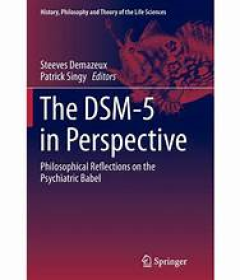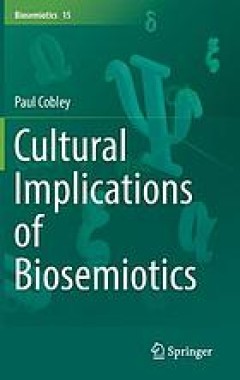Filter by

Translational Biomedical Informatics A Precision Medicine Perspective
This book introduces readers to essential methods and applications in translational biomedical informatics, which include biomedical big data, cloud computing and algorithms for understanding omics data, imaging data, electronic health records and public health data. The storage, retrieval, mining and knowledge discovery of biomedical big data will be among the key challenges for future transla…
- Edition
- -
- ISBN/ISSN
- 978-981-10-1503-8
- Collation
- -
- Series Title
- -
- Call Number
- -

The Ecology of Animal Senses
The collection of chapters in this book present the concept of matched filters: response characteristics “matching” the characteristics of crucially important sensory inputs, which allows detection of vital sensory stimuli while sensory inputs not necessary for the survival of the animal tend to be filtered out, or sacrificed. The individual contributions discuss that the evolution of sensi…
- Edition
- 1
- ISBN/ISSN
- 978-3-319-25492-0
- Collation
- X, 269, 49 b/w illustrations, 46 illustrations in colour
- Series Title
- -
- Call Number
- -

The DSM-5 in Perspective
Since its third edition in 1980, the Diagnostic and Statistical Manual of Mental Disorders (DSM) of the American Psychiatric Association has acquired a hegemonic role in the health care professions and has had a broad impact on the lay public. The publication in May 2013 of its fifth edition, the DSM-5, marked the latest milestone in the history of the DSM and of American psychiatry. In The DSM…
- Edition
- 1
- ISBN/ISSN
- 978-94-017-9765-8
- Collation
- XXIV, 238
- Series Title
- History, Philosophy and Theory of the Life Sciences
- Call Number
- -

The Rasputin Effect: When Commensals and Symbionts Become Parasitic
This volume focuses on those instances when benign and even beneficial relationships between microbes and their hosts opportunistically change and become detrimental toward the host. It examines the triggering events which can factor into these changes, such as reduction in the host’s capacity for mounting an effective defensive response due to nutritional deprivation, coinfections and seemi…
- Edition
- 1
- ISBN/ISSN
- 978-3-319-28170-4
- Collation
- XII, 357, 12 b/w illustrations, 15 illustrations in colour
- Series Title
- Advances in Environmental Microbiology
- Call Number
- -

Cultural Implications of Biosemiotics
This is the first book to consider the major implications for culture of the new science of biosemiotics. The volume is mainly aimed at an audience outside biosemiotics and semiotics, in the humanities and social sciences principally, who will welcome elucidation of the possible benefits to their subject area from a relatively new field. The book is therefore devoted to illuminating the extent …
- Edition
- -
- ISBN/ISSN
- 9789402408584
- Collation
- xv, 139 pages
- Series Title
- -
- Call Number
- 570

Obstacles to Environmental Progress A U.S. perspective
environment;policy;biology;earth sciences;United States;obstacles to progress;environmental policy;environmental law;environmental regulation;environmental science;environmental progress;environmental solutions;environmental justice;sustainability;uncertainty;decision processes;climate change;problem solving;unintended consequences;systems perspective;environmental monitoring;freedom and enviro…
- Edition
- -
- ISBN/ISSN
- 9781800082076
- Collation
- -
- Series Title
- -
- Call Number
- -
Tracking and Mapping of Spatiotemporal Quantities Using Unicellular Swarm Int…
The book discusses new algorithms capable of searching for, tracking, mapping and providing a visualization of invisible substances. It reports on the realization of a bacterium-inspired robotic controller that can be used by an agent to search for any environmental spatial function such as temperature or pollution. Using the parameters of a mathematical model, the book shows that it is possibl…
- Edition
- -
- ISBN/ISSN
- 978-3-319-27425-6
- Collation
- -
- Series Title
- -
- Call Number
- -

Towards a New Neuromorphology
This book demonstrates that the systematic study of gene expression patterns in embryonic and adult brains, in combination with selected data from earlier studies, can pave the way for a new neuromorphology, the most salient features of which may be summarized as follows: (1) Causal analysis of molecular patterning at neural plate and early neural tube stages has shown that the CNS is essential…
- Edition
- -
- ISBN/ISSN
- 978-3-319-25693-1
- Collation
- -
- Series Title
- -
- Call Number
- -

Cellular Rhythms and Networks : Implications for Systems Medicine
This book provides an overview of circadian rhythms and cellular networks in their relation to biological systems and dynamical medicine. Six concise chapters explore circadian cell rhythms and biomarkers in inflammation, cardiovascular disease, cancer, depression, and more in causing and treating these ailments. The final chapter discusses optimization of drug delivery and individualized treat…
- Edition
- -
- ISBN/ISSN
- 978-3-319-22819-8
- Collation
- -
- Series Title
- -
- Call Number
- 570

Cartilage Volume 1: Physiology and Development
In three Volumes this mini book series presents current knowledge and new perspectives on cartilage as a specialized yet versatile tissue. This first volume provides a comprehensive overview on the basic composition and development of cartilaginous tissues followed by the description of the major signaling pathways which regulate cartilage morphogenesis and function. This book addresses Profe…
- Edition
- -
- ISBN/ISSN
- 978-3-319-29568-8
- Collation
- -
- Series Title
- -
- Call Number
- 571.6
 Computer Science, Information & General Works
Computer Science, Information & General Works  Philosophy & Psychology
Philosophy & Psychology  Religion
Religion  Social Sciences
Social Sciences  Language
Language  Pure Science
Pure Science  Applied Sciences
Applied Sciences  Art & Recreation
Art & Recreation  Literature
Literature  History & Geography
History & Geography